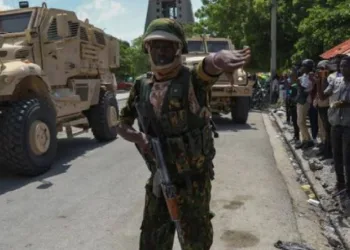Mount Everest, towering at 8,848 meters above sea level, stands as the ultimate test of human endurance and determination. While numerous climbers have conquered its summit, only a select few have achieved this feat without the aid of supplemental oxygen. For Kenyans, the challenge is particularly formidable due to unique geographical and physiological factors that make such an ascent nearly insurmountable.
The Reality of Hypoxia
At the extreme altitudes of Everest, the air is dangerously thin, containing only about a third of the oxygen available at sea level. This drastic reduction in oxygen leads to hypoxia, where the body struggles to obtain sufficient oxygen to function properly. For climbers, this can result in severe fatigue, impaired judgment, and life-threatening conditions such as high-altitude pulmonary edema (HAPE) and high-altitude cerebral edema (HACE).
Geographical and Physiological Disadvantages
Equatorial Origin
Kenya’s location on the equator means its residents are accustomed to a stable, warm climate with minimal seasonal variation. This consistent environment does not facilitate natural acclimatization to the cold, hypoxic conditions found at high altitudes. Unlike individuals from high-altitude regions who have adapted over generations to thin air, Kenyans generally lack this physiological advantage.
Limited High-Altitude Experience
Mount Kenya, the highest peak in Kenya at 5,199 meters, provides significant altitude but falls short of preparing climbers for the extreme hypoxia above 8,000 meters known as the ‘Death Zone.’ Consequently, Kenyan climbers have limited opportunities to acclimatize to the severe conditions experienced on Everest.
The Importance of Acclimatization
Acclimatization is crucial for high-altitude climbs as it allows the body to adjust to lower oxygen levels. This process is especially critical for climbs without supplemental oxygen, requiring extended periods at intermediate altitudes to increase red blood cell production and enhance oxygen-carrying capacity. Kenyan climbers face challenges in accessing suitable high-altitude training grounds locally, complicating this essential preparation.
Physiological Limitations
Oxygen Utilization Efficiency
Individuals born and raised at high altitudes typically exhibit enhanced oxygen utilization efficiency, characterized by higher concentrations of hemoglobin, greater lung capacity, and more efficient circulatory systems. Kenyans, lacking these adaptations, face significant challenges when climbing without supplemental oxygen.
Muscle Efficiency and Endurance
High-altitude environments place substantial stress on the body, particularly on muscle efficiency and endurance. Climbers must maintain strength and stamina over prolonged periods of exertion in oxygen-deprived conditions. While Kenyans excel in endurance sports like long-distance running, the specific muscle efficiency required for sustained high-altitude climbing without supplemental oxygen demands specialized conditioning.
The Psychological Challenge
The psychological demands of climbing Everest without supplemental oxygen are profound, exacerbated by severe hypoxia leading to cognitive impairments, hallucinations, and extreme fatigue. Kenyan climbers, without prior acclimatization and experience in similar extreme conditions, may find the psychological strain of such an ascent overwhelming.
Socioeconomic Barriers
Mountaineering at the level required to summit Everest without supplemental oxygen is financially prohibitive. Costs include specialized training, high-altitude gear, and multiple acclimatization trips to suitable peaks often distant from Kenya. These financial and logistical barriers pose significant hurdles for many Kenyan climbers, limiting their access to essential preparation and support.
In conclusion, the aspiration to conquer Everest without supplemental oxygen is a monumental challenge shaped by complex geographical, physiological, psychological, and socioeconomic factors. Kenyan climbers face unique obstacles that underscore the extraordinary determination and preparation required to undertake such a formidable feat.
Why No Kenyan Has Conquered Mount Everest Without Supplemental Oxygen: Exploring the Challenges
Plugin Install : Subscribe Push Notification need OneSignal plugin to be installed.

















